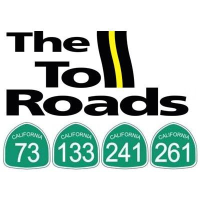Orange County Drivers Signing up for 17 Extra Years of Road Tolls

When state lawmakers gave innovative Orange County the green light in 1987 to begin building a web of toll roads in a state that had none, residents were told construction bonds for the San Joaquin Hills corridor would be paid off by 2033 and the roads would be free to travel.
But the 15-mile-long toll road experienced financial problems almost immediately after it opened in 1997, and in 2011, with the threat of bankruptcy hanging over the proceedings, bonds were refinanced and payments were stretched out to 2042. It wasn’t the final restructuring.
Last week, the San Joaquin Hills Transportation Corridor Agency agreed to refinance the debt again, raising the total amount owed, and keep tolls around until 2050. The agency’s press release announcing the refi didn’t mention any dollar figures, but the complicated deal could restructure half the $2.1 billion debt.
The corridor, which parallels the I-5, the I-405 and the Pacific Ocean, has been plagued by awful revenue and ridership projections from the start. A 1997 guesstimate figured 61 million drivers would traverse the 15-mile road in 2012-13, generating $172 million, according the Register. Instead, 25 million vehicles brought in $10 million.
Toll operators blame the bad economy, improvements to the public highways and opposition to expansion plans for much of their woes.
The unique public-private partnership (3P) was conceived during Republican Governor George Deukmejian’s administration in the 1980s as a way to avoid traditional taxes for public transportation projects while tapping marketplace capital. A bloated public transportation bureaucracy would be replaced by efficient professionals who understand bottom lines.
Orange County eventually got the go to build four toll roads. The Foothill/Eastern Transportation Corridor Agency refinanced the three it oversees last December after the State Treasurer’s office predicted it would probably default if it didn’t.
Despite the agency’s financial problems, or perhaps because of them, an effort was made to extend the corridor through the heart of the San Onofre State Beach, threatening endangered species, reducing available recreation space and impacting training exercises at the U.S. Marine Corps base at Camp Pendleton. The California Coastal Commission rejected the plan and the U.S. Department of Commerce concurred.
San Diego County built the South Bay Expressway toll road near the Mexican border. It opened in 2003 and went bankrupt in 2010. The 10-mile toll way cost $635 to build and was eventually sold to the San Diego Association of Governments (SANDAG) for $341.5 million. It was valued at $287 million in bankruptcy.
The new San Joaquin Hills corridor notes will go on the market October 20, but things are already looking up. The Los Angeles Times wrote that Wall Street has given the bonds the lowest investment grade, which is an improvement. Previous highway notes were considered non-investment grade, otherwise known as junk.
–Ken Broder
Drivers May Have to Pay 73 Tolls Longer (by Kellie Mejdrich, Orange County Register)
O.C. Toll Road to Be Refinanced Again; Drivers May Be Paying until 2050 (by Dan Weikel, Los Angeles Times)
San Joaquin Hills Transportation Corridor Agency Approves Tender Offer (The Toll Roads)
South Bay Expressway: Bankrupted Toll Road Tests Transportation Department Program (by Matt Sledge, Huffington Post)
California P3 Files Chapter 11 (by Rich Saskal, The Bond Buyer)
Background & History (The Toll Roads)
Treasurer’s Office Report Says Default Is Likely if Road Tolls Aren’t Extended 13 Years (by Ken Broder, AllGov California)
Ill-Conceived Southern California Toll Roads Struggle to Survive (by Ken Broder, AllGov California)
- Top Stories
- Controversies
- Where is the Money Going?
- California and the Nation
- Appointments and Resignations
- Unusual News
- Latest News
- California Forbids U.S. Immigration Agents from Pretending to be Police
- California Lawmakers Urged to Strip “Self-Dealing” Tax Board of Its Duties
- Big Oil’s Grip on California
- Santa Cruz Police See Homeland Security Betrayal in Use of Gang Roundup as Cover for Immigration Raid
- Oil Companies Face Deadline to Stop Polluting California Groundwater





